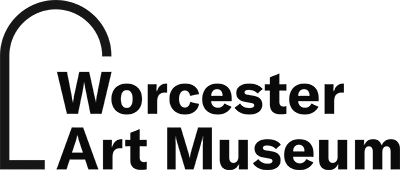Provenance is the history of the ownership of a work of art, from the time of its creation to the present day. Nearly all artworks on display in museums were previously owned and housed elsewhere. Their stories coincide with pivotal events, cultural practices, and communities throughout history. Provenance research has changed over time and is a priority in current museum practices.
For many reasons, the provenance of certain objects can be difficult to determine. In the past, details of ownership were not always thoroughly recorded before an object came to a museum.
The Worcester Art Museum encourages curiosity and research regarding the provenance of objects in our collections. A list of resources is available below for individuals seeking to learn more.
If you have questions about provenance, please contact provenance@worcesterart.org.
Collections Management Policy
This Collections Management Policy defines how the Museum develops, cares for, and makes its collection accessible to the public, consistent with the mission of the Museum and with professional museum standards. This policy is intended to act both as a guide to staff in their work of developing, managing, and giving access to the collection and also to demonstrate to external stakeholders the Museum’s commitment to maintaining legal, ethical, and professional standards in developing, managing, and giving access to its collection.
Deaccessioning
The Worcester Art Museum regularly evaluates its collections to identify candidates for deaccession (or removal from the collection) by sale, transfer, exchange, disposal, or repatriation. All objects proposed for deaccession are subject to the criteria and procedures outlined in the Museum’s Collections Management Policy (approved by the Board of Trustees in 2016) as well as written procedures for deaccession and disposal. All deaccessions are reviewed internally by the Curatorial Division and the Museum Director, and they must be formally approved by the Collections Executive Committee and the full Board of Trustees. Any proceeds from the sale of deaccessions must be used to acquire works of art.
Independent research/public records
Getting started with provenance research
The Worcester Art Museum Library, Archives, and Curatorial departments contain extensive information and resources that are important for conducting provenance research. Much of this information is available to the public for research consultation.
Important archival collections include:
- Object records
- Museum correspondence records
- Loan receipt logs
- Museum exhibition records
- Museum annual reports, news bulletins, and journals
- Meeting minutes for various Museum committees and Trustees/Board of Directors
If you are new to provenance research, the International Foundation for Art Research provides a comprehensive Provenance Guide that introduces researchers to this type of art research and suggests valuable tools and resources for support.
You may also schedule a one hour personal research session with a Worcester Art Museum librarian by contacting library@worcesterart.org or provenance@worcesterart.org.
Resources for provenance research
General research
Web resources
- Federal Bureau of Investigation – National Stolen Art File
- Frick Collection – Archives Directory for the History of Collecting in America
- Getty Research Institute – Collecting and Provenance Research Guide
- International Art and Antique Loss Register Limited – Art Loss Register
- International Consortium of Photo Archives – PHAROS
- International Foundation for Art Research – Catalogues Raisonnés Database
- Oxford University Press – Oxford Art Online *subscription database
- SCIPIO – Art and Rare Book Sales/Auction Catalogs
Books
- Lancour, Harold. American Art Auction Catalogues, 1785-1942: A Union List. New York: The New York Public Library, 1944. WAM Library Reference Z5939.A1 L3 1944
- Lugt, Frits. Répertoire des Catalogues de Ventes Publiques: Intéressant l’art ou la Curiosité = Repertory of Catalogues of Public Sale Concerned with Art or Objets of Art. The Hague: Martinus Nijhoff, 1938-1987. WAM Library Stacks Quarto N8650 .L84 v. 1-4
- Tompkins, Arthur. Provenance Research Today: Principles, Practice, Problems. London: Lund Humphries in association with IFAR, 2020. WAM Library IN-PROCESS-0891
- Yeide, Nancy H. The AAM Guide to Provenance Research. Washington, DC: American Association of Museums, 2001. WAM Library Stacks N3999 .Y45 2001
WWII-era research
Web resources
- Commission for Looted Art in Europe – Central Registry of Information on Looted Cultural Property 1933-1945
- Cultural Plunder by the Einsatzstab Reichsleiter Rosenberg (ERR) – Database of Art Objects at the Jeu de Paume
- German Lost Art Foundation – Lost Art Database
- National Archives – Holocaust-Related Records
- National Archives – International Research Portal for Records Related to Nazi-Era Cultural Property
Books
- Allied Military Government (Germany). Répertoire des Biens Spoliés en France Durant la Guerre 1939-1945 = List of property removed from France during the war, 1939-1945. Berlin: Imprimerie Nationale, 1947. WAM Library Stacks D810.D6 A45 1947.
- Belgian Office for Economy and Agriculture. Missing Art Works of Belgium. Brussels: Belgian Office for Economy and Agriculture, 1994.
- Morozzi, Luisa and Rita Paris. Treasures Untraced: An Inventory of the Italian Art Lost During the Second World War. Rome: State Mint and Polygraphic Institute, 1995. WAM Library Stacks N6911 .O6413 1995x.
- Mravik, László and Loránd Bereczky. The “Sacco di Budapest” and Depredation of Hungary, 1938-1949: Works of Art Missing from Hungary as a Result of the Second World War: Looted, Smuggled, Captured, Lost and Destroyed Art Works, Books and Archival documents: Preliminary and Provisional Catalogue. Budapest: Hungarian National Gallery for the Joint Restitution Committee at the Hungarian Ministry of Culture and Education, 1998.
- Rousseau, Theodore. The Goering Collection. Washington, D.C.: U.S. Army, Office of Strategic Services, Art Looting Investigation Unit, 1945.
- Tomkiewicz, Władysław. Catalogue of Paintings Removed from Poland by the German Occupation Authorities During the Years 1939-1945. Warsaw: Ministry of culture and art, 1950. WAM Library Stacks N8795.3.P65 T64 1950.

